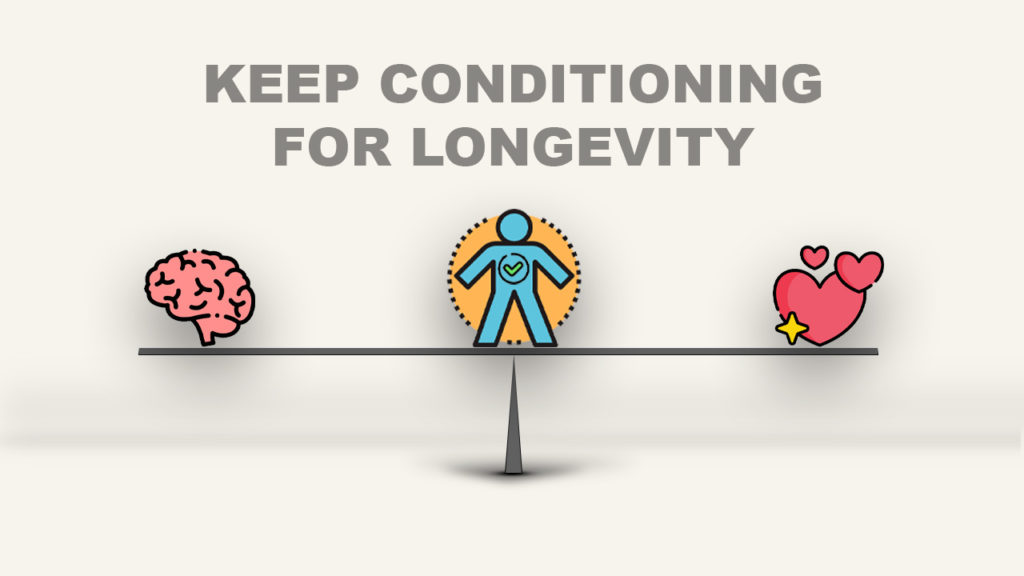
Aerial is creative and beautiful, but it’s also incredibly physically demanding. While training all of the creative work is really fun, it’s also very important to keep conditioning for longevity.
When we talk about conditioning we like to break it down into three important areas of focus:
To make sure that we can continue to dive deeper into the brain work of aerial theory and explore to our hearts content the expansive possibilities of aerial creativity we need to make sure that our bodies stay strong, mobile, and healthy!
Strength is what most people think of when they think about conditioning. For aerial work, some common strength conditioning drills include pull-ups, leg lifts, climbing, etc. There are several concepts about strength that are really important to keep in mind.
In our classes and training we typically put conditioning like this at the end of our session, so that we can work to fatigue AFTER we’ve put in all of the other work we wanted to accomplish.
Mobility is commonly thought of as flexibility, but in aerial it’s so important to have strong control of all of your range of motion that we DON’T describe what we do as stretching. Mobility is working to improve your range of motion which includes being able to control the entire range of motion, especially at its most extreme.
For example, in a split, gravity can help get us deeper in a regular split on the floor. That’s what we call passive flexibility (even though your muscles should still be engaged and strong). But, how deep of a split can you get into if you’re trying to lift your legs up into it instead? That’s active flexibility. And the closer your active flexibility is to your passive flexibility, the better your overall mobility is for aerial work.
In aerial, we typically aren’t striving for absolute mobility without control. Our students who come in with hypermobility, but not the strength to support the mobility, often have to work harder in classes than students with less mobility.
Pre-Hab is, in our opinion, the most important conditioning to keep up with. Pre-hab means taking care of all the smaller stabilizing muscles that are so incredibly important for efficient movement. When someone injures their shoulder, for example, and they’re prescribed rehab work to heal the injury, those same exercises done preventatively are what we call Pre-Hab.
These type of drills can be frustrating and humbling but they have the potential to help you make the most gains in your aerial practice if you choose the right ones for your body.
Ideally, we like to combine all three of these types of conditioning whenever possible. With pull-ups, for example, it can mean breaking them down in a variety of ways, or using bands to share weight to change alignment, or being sure to work through the full range of motion each time.
With splits, for example, it means training the muscles that need to fire at the end range of your motion. It means having the strength to exit a split as well as enter a split. It means working smart at your current range of motion and improving bit by bit over time.
We often talk about tricking our students into conditioning or mastering technique. What we mean by this is trying to make it so much fun, they don’t realize they are doing it. It is kind of like the difference between running around a field chasing a ball vs running laps. They are both great, but one is more fun.
It’s important as an aerial teacher to keep conditioning fun and inspiring for your students. We make sure in every class to spend some time working on the following, no matter the level.
Core conditioning, on the floor and/or on the apparatus. There are so many ways to mix this up and students love when they tap into their deep core!
Pull up conditioning doesn’t mean doing pull ups in every class, in fact, most of our students can’t do a pull-up when they first start aerial. But, we train the actions and the strength and control in various ways in every single aerial class.
Pre-hab means tapping into the stabilizing muscles that keep us in good healthy alignment. This often looks like small movements that take a ton of effect, and typically we work this sort of movement into our aerial warm-ups.
We’re passionate about empowering students and teachers to become safer, healthier, and happier aerialists. For access to guided drills (including the ones we talk about here), join the membership. Or, try out our free membership for a new batch of free skills, drills and sequences every month.
Need some extra face time? We’d love to chat with you. Schedule a meeting with us during our regular office hours!
